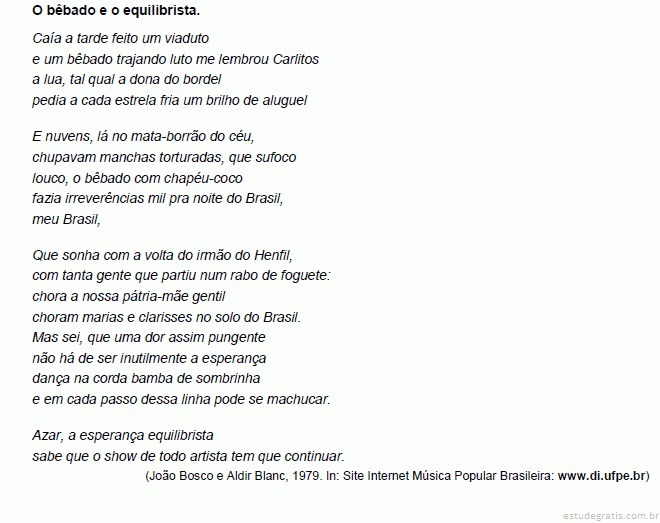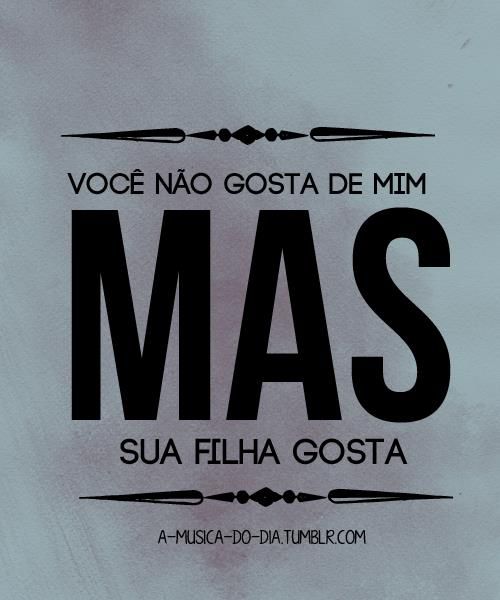Olá leitores, no post de hoje trataremos de um assunto que divide opiniões: a ditadura militar. Esse período trouxe consigo inúmeras formas de repressão e censura, porém também temos o outro lado da moeda em houve diversas formas de resistência, tanto na música, como nas artes, no teatro, e em manifestações.
No momento em que se institui a ditadura, já se há o começo de certas manifestações, porém algumas das maiores delas acontecem no governo de Costa e Silva:
- Como a manifestação estudantil, que ocorreu no Rio de Janeiro pedindo por uma melhor qualidade de alimentação no restaurante universitário Calabouço, que ocasionou na morte de um estudante de 17 anos.
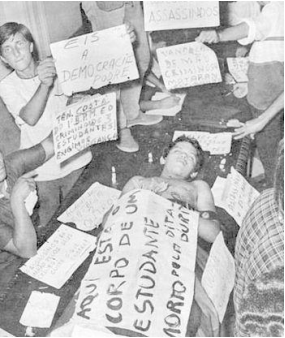
- Como a passeata dos cem mil, que reuniu intelectuais, artistas, estudantes, trabalhadores e religiosos, que também ocorreu no Rio de Janeiro, expressando descontentamento com o regime e com a repressão policial violenta que ocorria nas manifestações.
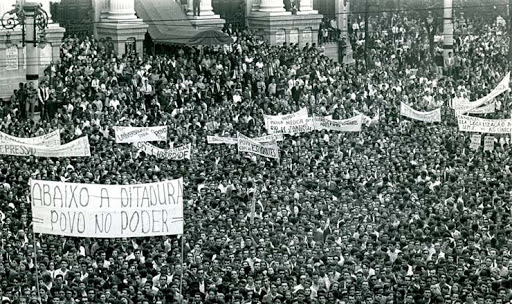
O maior período de repressão se iniciou após a implementação do Al-5 o qual dava ao presidente poderes , como :
- Fechar o Congresso Nacional ;
- Fazer leis ;
- Ordenar intervenção em estados e municípios ;
- Caçar políticos eleitos pelo povo ;
- Demitir , transferir e aposentar funcionários públicos , decretar estado de sítio e suspender o direito de habeas corpus de acusados de crimes contra a segurança nacional ;
- Confiscar bens;
- Suspensão do Habeas Corpus.
A partir deste período as formas de resistência tinham que ser feitas de forma mais às escondidas,sendo na maioria das vezes de forma não tão explícita, pois tudo passava pela mão dos censores e muitas vezes jornais tinham partes faltando, porque as notícias tinham que ser retiradas de última hora.
Artistas eram perseguidos , exilados e muitas vezes mortos por terem suas obras censuradas pelo governo , tendo o motivo : oposição à ditadura. Chico Buarque foi um dos artistas que produziu músicas na época com mensagens subliminares contra a ditadura . Aqui está um pedaço de sua música Cálice , uma das mais reconhecidas .
Tivemos outras músicas que também marcaram esse período como:
A arte foi muito importante e continua sendo .Além de ser um veículo de informação , a arte é uma forma expressar o seu íntimo , seu sentimentos de uma forma muitas vezes subconsciente , ela liga e transcreve suas experiências e emoções. Na ditadura esse meio levou as pessoas a entenderem e se posicionarem de acordo com os acontecimentos pois foram atingidas pela sensibilidade da arte e seu conhecimento , vida e emoções .
Ficaremos por aqui , com uma reflexão: será que sem essa arte , esse posicionamento estaríamos onde estamos ? Esperamos que tenham gostado do post de hoje , até mais …
Dictatorship in Brasil
Hello readers, in this post we will deal with a subject that split opinions: the military dictatorship. This period brought with it numerous forms of repression and censorship, however we have the other side where we have had various forms of resistance,both in the music, arts, theater and in manifestations.
In the moment in which dictatorship was instituted, we had already had a bunch of manifestations, but some of the biggest ones happened during the government of Costa and Silva:
- Like the student manifestation that occurred in Rio de Janeiro, asking for a better quality of food in the universitary restaurant Calabouço, that ended up in the death of a young student, who was 17 years old.

- Like the march of the hundred thousand, that brought together intellectuals,artists, students, workers and religious, it also happened in Rio de Janeiro, expressing discontent with the government and the violent police repression that took place in the demonstrations.

The biggest period of repression started after the implementation of the Al-5, that gave the president powers like:
- Closing the national congress;
- Creating laws;
- Ordering interventions in states and municipalities;
- Hunt politicians by the people ;
- Dismissing, transferring and retiring civil servants, enact a state of siege and suspend the right of habeas corpus of those accused of crimes against national security;
- confiscating property;
- Suspension of Habeas Corpus.
Since this period the forms of resistance had to be done in a more hidden way, being most of the time not so explicitly, because everything passed by the censors and very often the journals have had parts missing, because the news had to be withdrawn at the last minute.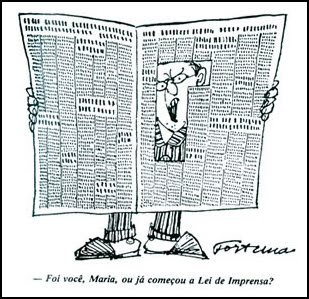
Artists were persecuted , exiled and many times murdered for having their works censored by the government, as reason: opposition to dictatorship. Chico Buarque was one of the artists that produced songs in that time with subliminal messages against dictatorship. Here is one piece of the song Cálice, one of the most recognized .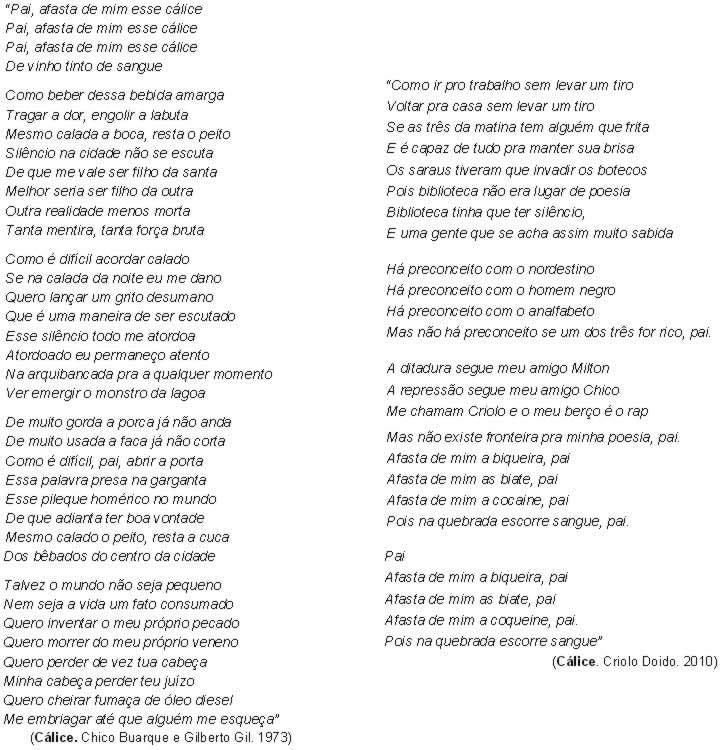
We have had other songs that also marked this period as:
The art was very important and continues to be . Besides being a vehicle of information, art is a way to express your intimate, your feelings often in a subconscious way, it calls and transcribes your experiences and emotions. In the dictatorship, this led people to understand and to position themselves according to the events because they were affected by the sensitivity of art and its knowledge, life and emotions.
We remain here, with this reflexion: would we be where we are, without this art and this positioning? We hope you liked today’s post, see you soon…
By: Izabela Cray, Giovana Gruzska, Flavia Scharan, Lucas Tramontin, Pedro Cavalcante, Sabrina Mialski and Nagib Colaça.

